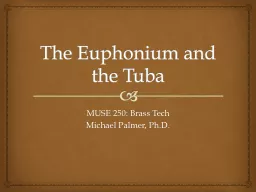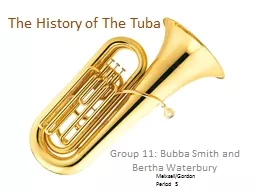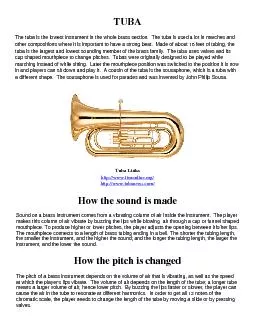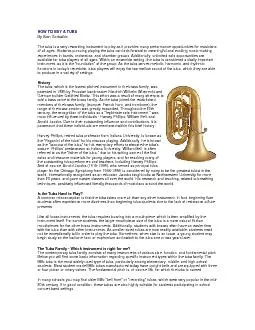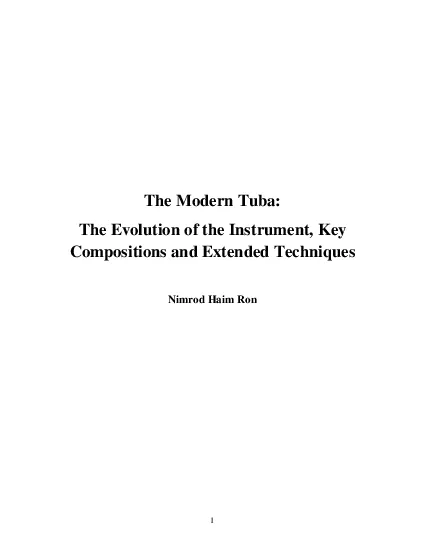PPT-Timeline History of the Tuba
Author : kittie-lecroy | Published Date : 2016-07-11
Renaissance to Baroque The tuba we know today being made fully of brass has descended and developed quite extensively over the past couple of centuries starting
Presentation Embed Code
Download Presentation
Download Presentation The PPT/PDF document "Timeline History of the Tuba" is the property of its rightful owner. Permission is granted to download and print the materials on this website for personal, non-commercial use only, and to display it on your personal computer provided you do not modify the materials and that you retain all copyright notices contained in the materials. By downloading content from our website, you accept the terms of this agreement.
Timeline History of the Tuba: Transcript
Download Rules Of Document
"Timeline History of the Tuba"The content belongs to its owner. You may download and print it for personal use, without modification, and keep all copyright notices. By downloading, you agree to these terms.
Related Documents



